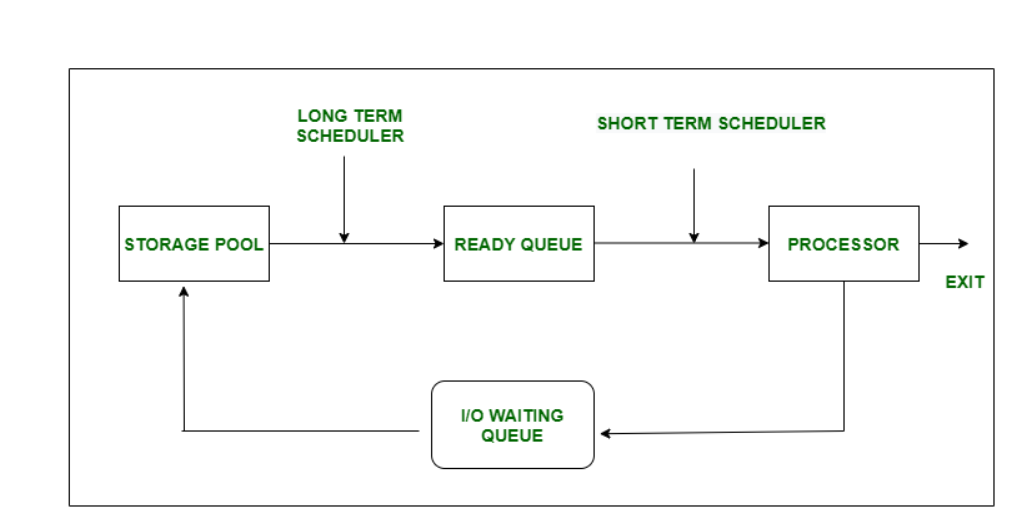先决条件 – 进程调度程序
1. 短期调度程序:
短期调度程序也称为 CPU 调度程序。它的主要目标是根据某些设定的标准提高系统性能。短期调度程序有助于选择准备执行的进程组并将 CPU 分配给每个进程。与中期调度程序不同,它执行更频繁,即在几秒钟内执行。短期调度程序对 DOM(多编程程度)的控制较少。

2. 中期调度员:
中期调度器也称为交换调度器。它的主要目标是从主内存中换出挂起的进程。如果正在运行的进程发出 I/O 请求,它就会被挂起。挂起的进程不会显示任何完成进度,因此应将其移至二级存储,从而为新进程提供空间。与短期调度程序不同,它的执行不是很频繁。中期调度器减少了DOM(多道程序设计的程度)。


短期和中期调度程序之间的区别:
| S.No. | SHORT-TERM SCHEDULER | MIDDLE-TERM SCHEDULER |
|---|---|---|
| 1. | Short-Term scheduler is also known as CPU Scheduler. | Middle-Term scheduler is also known as Swapping Scheduler. |
| 2. | Speed of Short-Term scheduler is very fast as compared to middle-Term scheduler. | Its speed is less than Short-Term scheduler. |
| 3. | It provides less control over Degree of programming. | It reduces the Degree of Programming. |
| 4. | Its presence in Time sharing system is very minimal. | Middle-term scheduler is a part of Time sharing system. |
| 5. | In short-term scheduler, there occurs transition of process from ready to executing state. | In middle-term scheduler, no process transition state occurs. |
| 6. | Its function is to selects those processes which are ready to execute. | Its function is to reintroduce process back in the memory. |